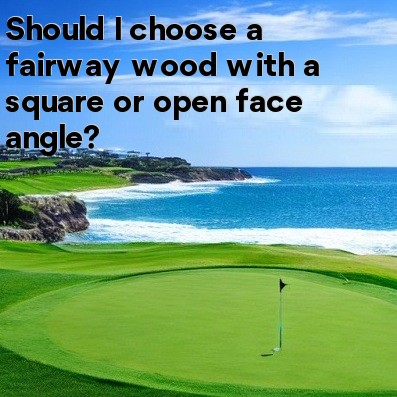
Choosing a Fairway Wood: Square or Open Face Angle?
When it comes to selecting a fairway wood for your golf bag, one important factor to consider is the face angle. The face angle refers to the direction the clubface points at address, either square or open. Each option has its advantages and considerations, depending on your swing tendencies and desired ball flight. Let's explore the differences between a square and open face angle to help you make an informed decision.
Square Face Angle
A fairway wood with a square face angle is designed to be aligned directly at the target at address. This configuration promotes a straighter ball flight and more accuracy for golfers who struggle with slicing or hooking the ball. The square face angle helps reduce the tendency for the ball to curve, providing better control over your shots.
If you have a relatively consistent swing and want to hit more precise shots with your fairway wood, a square face angle would be a suitable choice. It gives you the confidence of aligning the clubface directly towards your target, allowing you to focus on your swing mechanics and executing a straight shot.
Open Face Angle
On the other hand, a fairway wood with an open face angle means the clubface points slightly to the right of the target at address for right-handed golfers (opposite for left-handed golfers). This design helps counteract a slice and promotes a gradual draw or straighter shot for players who tend to fade the ball. An open face angle can be especially beneficial off the tee or when approaching a dogleg hole.
If you consistently struggle with slicing the ball off the tee or with your fairway wood, an open face angle can help correct your ball flight. It encourages a draw or straighter shot by allowing you to rotate the clubface more easily through impact, promoting a more desirable ball flight and potentially adding distance to your shots.
Considerations and Personal Preference
- Swing Tendencies: Take into account your natural ball flight tendencies. If you already hit the ball relatively straight, a square face angle may be more suitable. Conversely, if you tend to fade or slice the ball, an open face angle can help correct that.
- Desired Shot Shape: Consider the shot shape you prefer or want to develop. A square face angle generally produces straighter shots, while an open face angle promotes fades or draws.
- Experimentation: It's essential to test both options on the practice range and see which face angle feels more comfortable and helps you achieve the desired results.
- Professional Guidance: If you're uncertain about which face angle to choose, seeking advice from a golf instructor or club fitter can provide valuable insights tailored to your specific swing and game.
Ultimately, the decision between a square or open face angle for your fairway wood depends on your individual swing tendencies, desired shot shape, and personal preference. There is no one-size-fits-all answer, as different golfers have different needs. So, take the time to experiment and find the right face angle that complements your game and contributes to improved performance on the course.






